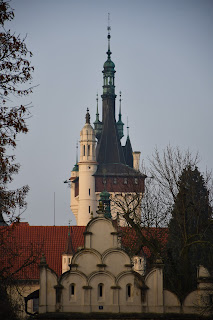From Victoria Falls to the Skeleton Coast – Day 5: The revolutionary aesthetics of Windhoek
After a few minutes’ worth of calculations, we managed to spend all our remaining Pula buying snacks at the airport in Maun. Hoping to see a bit of the Okavango Delta from above during our flight, we asked to be seated on the right side of the plane, but instead of lush green forests parcelled out by dark blue waterways, all we saw were dry riverbeds in a sea of greyish brown.
We arrived
in Windhoek a little before noon – or so I thought. While Wei was exchanging
money, I looked into Google Maps and saw that our location was far east of
where I thought we ought to be. It took me a few moments to accept that my
phone was not mistaken and that we had not, in fact, landed at Eros Airport but
at Hosea Kutako International, whose existence was a complete novelty to me. It
certainly explained why we saw very few buildings during our descent. Checking
my ticket, I saw that Hosea Kutako had always been our intended destination and
I that had been wrong to assume a small city like Windhoek would only have one
airport.
We
stomached the much higher than expected fare for our journey to our hotel,
where we dropped off our bags. I was surprised to see that it was owned by a
Chinese couple, and even more surprised at the number of Chinese people we later
saw in the city. The city itself struck me as almost Texan: it was built
sideways rather than upwards, and more for cars than for people. Some of the
crossings had no green lights for pedestrians and those that did flashed them
for some three seconds before allowing another onslaught of cars to gush
through.
Our first
destination was the Christuskirche, a Lutheran Church with a roof whose arched
steps made it look like a giant gingerbread house. The church was closed, so we
continued directly to the Independence Museum, which was built across the road
from the traffic island on which the Christuskirche stands. This building is
even stranger than the odd but charming church: it is a giant barrel standing
on one leg and contained within a three-legged frame with elevators on the
outside. Both the museum and the prominently displayed statue of Sam Nujoma,
Namibia’s first president, were built by North Korea’s Mansudae Overseas
Projects.
We were puzzled to find that the museum had no reception. All we had to do was sign the guestbook by the elevator, after which we rode up to the first museum floor and walked right inside. The three floors had more symbolism than information: its many statues and tableaux – in an aesthetic that vacillated between brutalism and socialist realism – depicted either the Namibian people suffering or fighting for their independence. I was particularly interested in Namibia’s ties with the outside world. Its armed struggle received support from the likes of Fidel Castro, Robert Mugabe, and Kim Il-sung.
We ate lunch at the top floor of the museum, which is home to an incongruously fancy restaurant with views over the entire city. The food was not very good. From there, we continued our walking tour to the Anglican Saint George’s Cathedral, where we were let in by the groundskeeper, and the Turnhalle, which housed the SADC Tribunal before it was disbanded in 2012. Slightly farther west, we made a stop by the World War One memorial obelisk and the old railway building before ending our loop at Saint Mary’s Cathedral. Having quite a bit of time to spare, we bought some provisions for the next few days, as we would embark on a road trip the following morning.























Comments
Post a Comment